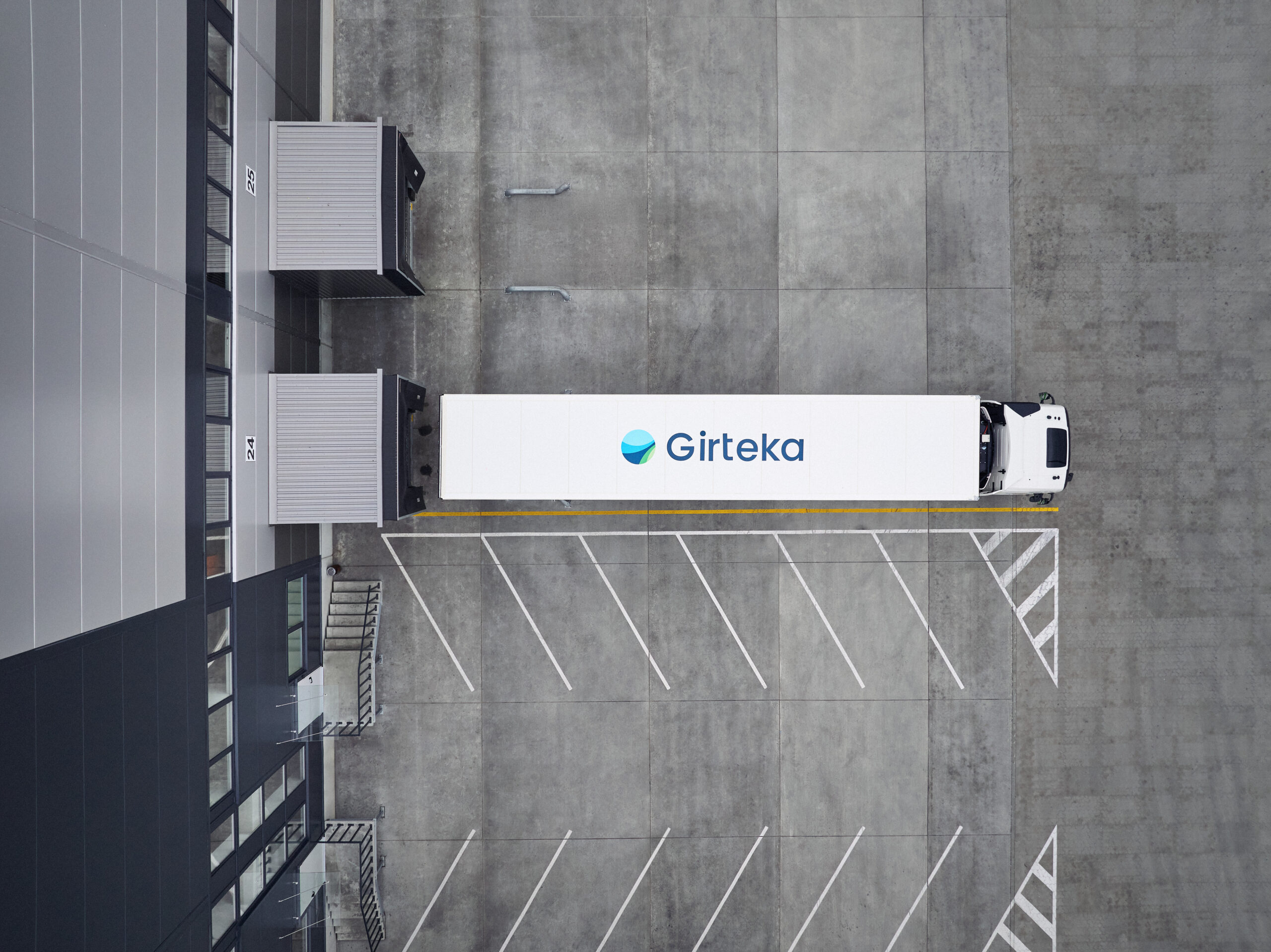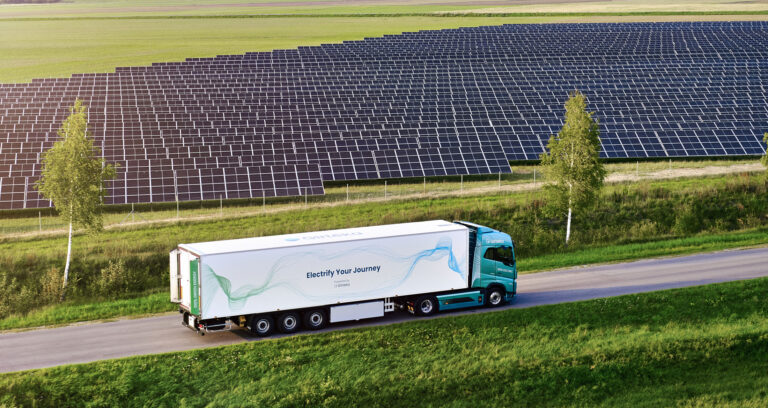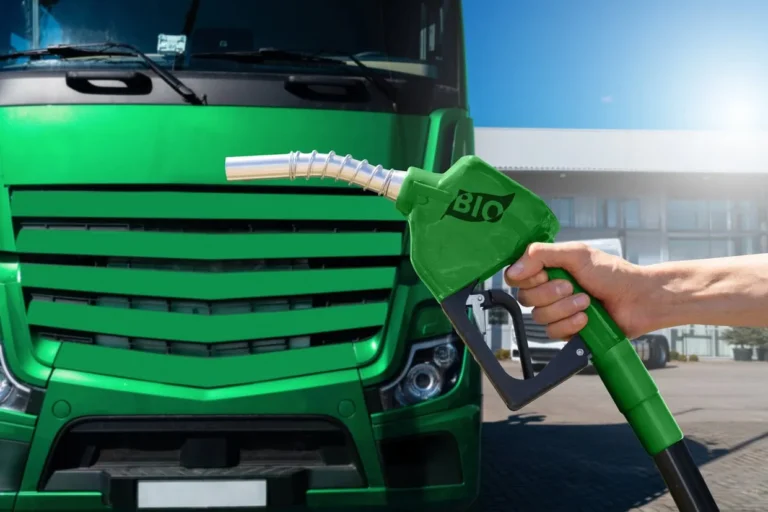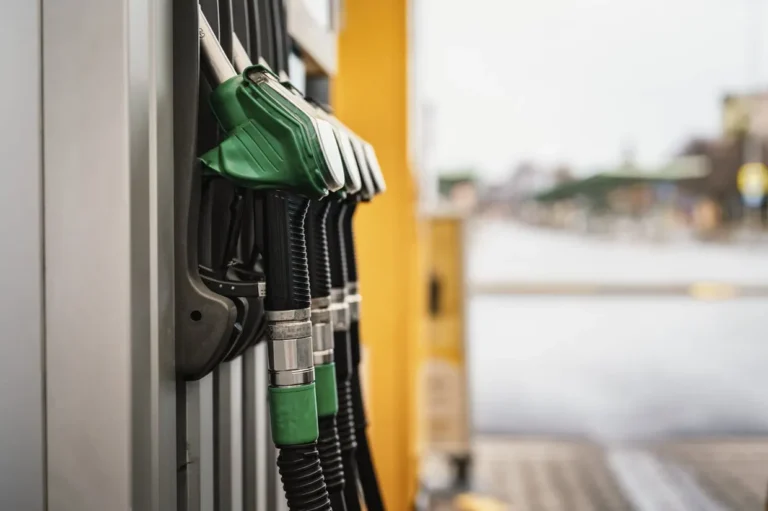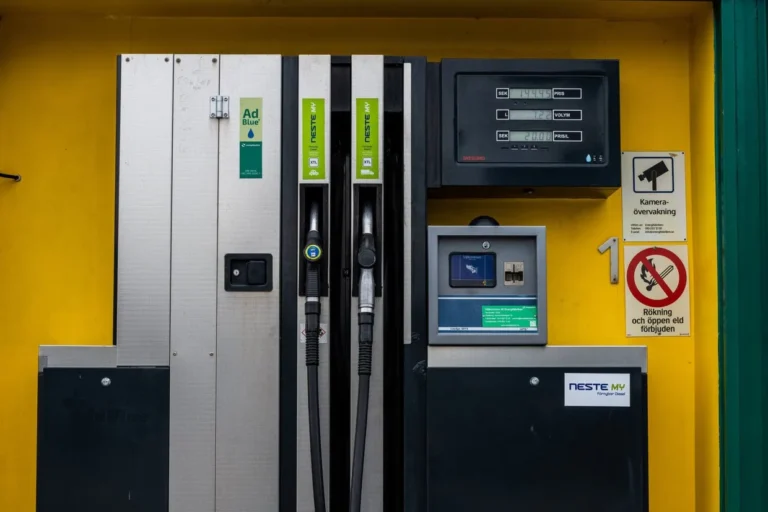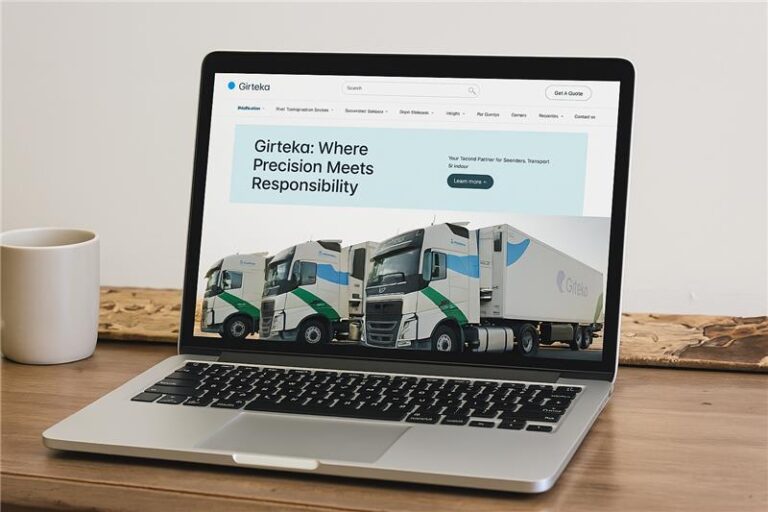In e-commerce, delivering an excellent customer experience is the main priority. That is only possible if the whole supply chain is organized smoothly. As most of e-commerce businesses are very dependent on last-mile delivery, fast and flexible logistics operations become crucial. And as the road remains the primary means of transportation for e-commerce, road freight companies must adapt to the attributes and challenges of the e-commerce business.
E-commerce is booming
One of the most distinct trends over the past few years has been the growth of consumers buying goods online, known as e-commerce. The Covid pandemic played a huge role in fuelling e-commerce businesses by the simple fact that the brick-and-mortar locations were closed due to lockdowns and people were reluctant to be in close contact with each other. As e-commerce sites have now become retailing giants, the traditional consumer stores had to adapt to the new tendencies in consumption, and present online shopping solutions to their customers in order not to lose out on business.
According to the Ecommerce Europe Report for 2021: “Throughout Europe, e-commerce use is on the rise, as the number and share of e-shoppers increases every year. The largest jump in e-shoppers can be seen in 2020, due in part to the Covid-19 pandemic pushing consumers to online shopping.”
“All 37 countries experienced increases in B2C e-commerce turnover, as well as E-GDP (the share of GDP made up by e-commerce). Turnover growth rates for Europe have remained consistently in the double-digits and are expected to continue an upward trajectory for the foreseeable future,” the report continues.
So, what is the scope that we are talking about? The Ecommerce Europe report partly showcases that while the percentage of e-shoppers across Europe grew from 64% in 2018 to 66% in the following year, the percentage rose to 71% by the end of 2020, and 73% by the end of 2021, indicating a steady rise over time.
As per most recent report by Transport Intelligence (TI), the global e-commerce logistics market overall grew by 19,9% in 2021. Moreover, the latest projections indicate that globally, e-commerce sales are expected to total $5.5 trillion worldwide in 2022 and continue to grow over the next few years, Logistics Management writes. According to Shopify, more than 20% of the total global retail sales in 2022 will be generated online.
But as e-commerce sales volumes continue to climb, the near future seems not so bright for the road freight transport sector in Europe. According to the latest forecast by TI, the European road freight market is projected to lose speed in 2023, expanding by only 1.1% in real terms (holding prices and exchange rates constant) to reach €389,338m, compared to the 4.9% growth predicted for 2022.
The report states that “both domestic and international European road freight market will slow down in 2023, but the slowdown will be more pronounced in the domestic section of the European road freight market. A key driver behind the stronger performance of the international section might be retail and e-commerce sales which stimulate more cross-border flows of consumer goods.”
And here is where geography comes into play. Although overall the e-commerce business is booming, the growth has concentrated mostly in the Western part of the continent. As Ecommerce Europe Report for 2021 indicates, Western Europe was the location of 64% of the total turnover of online-based retail, with Southern Europe “following far behind.” Meaning that more than two-thirds of the continent’s revenue comes from two parts of Europe, while Eastern, Central, and Northern regions account for 6%, 8%, and 6%, respectively.
While Eastern Europe exhibited by far the most growth out of all the regions, with 36% in 2020, it is still falling behind its counterparts, as it is “likely that Eastern Europe’s lag compared to other European regions in B2C e-commerce turnover is due to low e-shopper penetration (41%), which is less than half of Western Europe’s e-shopper penetration (86%),” the report continues.
What is worth noting here is that a large majority of carriers are located in Eastern Europe, and as long as the region continues on its path of growth in online retail, it might provide new opportunities for road freight companies to minimise “empty kilometre” runs, resulting from the new regulations introduced in February 2022 with the European Commission’s (EC) Mobility Package.
When talking about geography, one has also to keep it in mind that cross-border trading in Europe is still an area that is set for growth, as according to Eurostat’s data, the vast majority – over 88% of the total purchases within the EU in the previous three months since mid-December 2021 were done on national sellers’ websites, meaning that goods did not leave their country of origin. Meanwhile, 31% of shoppers bought goods from other countries within the bloc, with 21% of consumers buying goods from outside the EU.
Trends in e-commerce
November and December are typically a peak season for e-commerce businesses as consumers commence the most hectic shopping period of the year, fueled by such promotion events as Black Friday and Cyber Monday. More products are sold in preparation for the holiday season than at any other time of the year. In fact, some of the sales businesses generate their half-year profit in just these two last months.
In general, the peak for e-commerce spans four months, reaching the highest point at the end of the year, and gradually subsiding throughout January and February, with late deliveries and returned goods needed to be delivered, until the beginning of March marked by Valentine’s Day.
In e-commerce, especially during the peak period, all companies that want to succeed, whether logistics or retail, must focus on the most important key performance indicator (KPI): customer satisfaction. If a delivery is not on time or if it is obvious in advance that the delivery will not arrive as scheduled, customers are likely to switch to other competitors.
Expectation of convenience and speedy delivery are key. And the more goods are purchased, the more are returned after the holiday peak, a trend that is known as “reverse logistics”. Hence, for logistics companies, on-time in-full (OTIF) orders, order accuracy, days to delivery, returns turnaround time, meeting next-day shipping commitments, and other KPIs also factor into the equation. And the higher KPI of the carrier, the more cargo it is given by the client, translating into more revenues.
Next-day delivery has not stopped being the number one choice for consumers, as per Ecommerce Europe, 32% of shoppers chose the delivery option as their primary way of receiving goods in the EU in 2021. In order to be able to fulfil commitments on such short notice, e-commerce giants have to not only monitor their warehouse inventory closely but also be able to actually move those goods to sorting facilities that are much closer to consumers, where last-mile delivery processes kick in.
For instance, according to a report by TI, global e-fulfilment market made up 46.8% of the total e-commerce logistics, with last mile making up the remaining 53.2% in 2021.
Challenges of the e-commerce supply chain
The option to order your goods and receive them right at your doorstep sounds great – and there is little surprise that customers have grown so accustomed to it and now expect nothing less. However, behind that comfort lies a complex web of logistical processes and challenges needed to overcome to make a same-day delivery a reality.
“Consumers are demanding ever more convenience when they buy online, particularly where delivery is concerned. They want to have multiple delivery options to choose from, and to receive their products as fast as possible,” a report by McKinsey from back in 2014 points out. Aside from delivery options, consumers care about real-time updates of their shipment, and increasingly, they pay attention to how sustainable the delivery and/or the packaging of their parcel is.
According to the consulting company, once a consumer reaches that level of service, they are usually reluctant to go back. For companies to be able to offer deliveries within a short timeframe, they must deal with such challenges as “real-time product visibility across warehouses, very short fulfilment lead-times and flexible last-mile delivery while bringing the cost down to a level that consumers are willing to pay for.”
Retailers have to be very careful when planning out their supply chains, especially, as mentioned before, if they expand into new regions. “With convenience fast becoming one of the main points of competition for online retailers to gain market share, in many cases, the pressures of ever shorter delivery time requirement means that the need to be closer to the consumer is paramount,” states a Deloitte Insight Report from 2014.
Furthermore, when planning a location for a warehouse, one of the primary factors that must be considered is the ease of access for last-mile deliveries, as well as suppliers moving in their goods for them to be distributed, meaning that national and local roads must be accessed easily, the report explains. There is also an increasing preference to have proximity to alternative transport modes, such as by rail, air, and sea.
What are the solutions?
One of main the solutions to the challenges of managing e-commerce supply chains is information sharing within the warehouse, and between the shipper and the carrier. In fact, it is key to execute the process without breaking a link in the e-commerce supply chain. Here, digitalization is a must.
Data-driven planning and decision making, facilitated by intelligent operational systems and digital solutions allows taking care of your cargo movements between production sites, warehouses, and stores, ensuring traceability and real-time visibility. For instance, at Girteka, we employ an array of digital solutions that help with e-commerce deliveries, including such solutions as Artificial Intelligence (AI), Real Time Visibility (RTV), and Electronic Data Interchange (EDI).
The SAP Transport Management System (TMS) that encompasses the transport management and commercial procurements activities, allows the company to meet customers’ demand for capacity even more efficiently. The customer can also benefit from the RTV solution, which allows to log and monitor information as goods move through all stages of the supply chain.
Another digital solution and integration that the company provides for clients’ 3rd party applications is the EDI. This tool allows business operations to be processed faster since e-documents can be automatically integrated into other business systems. For instance, e-invoicing enables a company to automate their invoice processing. In addition to cost savings, the ability to automate the invoicing process and integrate with other business systems provides business efficiency and revenue generating opportunities.
SAP’s solution allows Girteka to simplify and automate processes, making sales, transport, and other processes much more efficient and accurate, and improving customer experience and satisfaction. By utilizing digital solutions such as mentioned before, the company can intelligently manage and analyse data in real time throughout the business chain, including transportation fleet, warehouse management, logistics operations and customer service, ensuring a stable flow of deliveries despite any potential disruptions.
Girteka case study
Girteka is trusted by the major e-commerce companies and control towers in Europe, for delivering high-quality service, operational excellence, and constant value creation. “The goal is to have a very high KPI with the client, especially regarding delivery on time (98,5% KPI, which is higher than for any other sector). Hence, our task is to work like a Swiss watch. We cannot be late because then the whole supply chain falls apart,” explains Evita Cicėnaitė, Key Account Manager at Girteka Europe West.
Since there are fluctuations in the cargo flow of e-commerce companies throughout the year, as the amounts depend on consumer behaviour – how much they are buying this week/this season, Girteka balances between maintaining quality of services and deploying its large fleet of 9,000 trucks to be able to support all clients, including e-commerce businesses.
“We have all the capabilities to support our e-commerce clients when it is needed. And we can offer solutions beyond just transporting goods from point A to point B. There are various projects, including what we call ‘tours’: when our truck arrives leaving its trailer and picking up our client’s trailer. For one or several weeks we buy a route and transport the client’s trailers according to agreed time frames,” explains Cicėnaitė.
Increasingly for e-commerce businesses, sustainability and environment-friendliness are very important issues. Hence, another solution that Girteka offers its clients is intermodal rail freight transport, which allows the customer’s goods to be carried much more sustainably, as the lane saves as much as 90% of CO2 emissions.
Having a long-term partnership with a trusted carrier could help a shipper fine-tune the details and receive custom tailored solutions, making it more competitive. What e-commerce giants value very much, aside from transportation capabilities, is a constant and dedicated team and a customer-centric approach to business.
Reliability in every area is key. It is important for the client that the team is already well informed on their business practices and can even share insights on how to improve the partnership. As dynamic as e-commerce businesses are, it requires the team’s quick reaction, flexibility and adaptability. Therefore, the notion that the client can trust the carrier regarding any questions or issues in various situations is crucial.
As a Responsible Logistics provider, driven by our client’s goals and needs, Girteka is constantly working on heightening the quality of its processes and operations to provide the best service possible. And as challenging as managing e-commerce supply chains can be, it is done easily when you choose a professional and reliable logistics partner.
